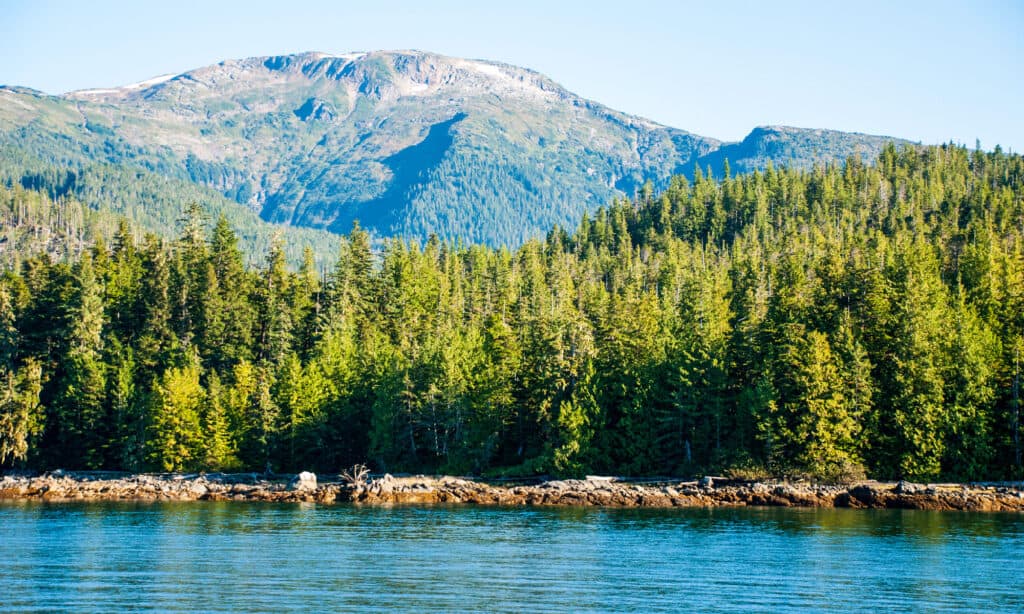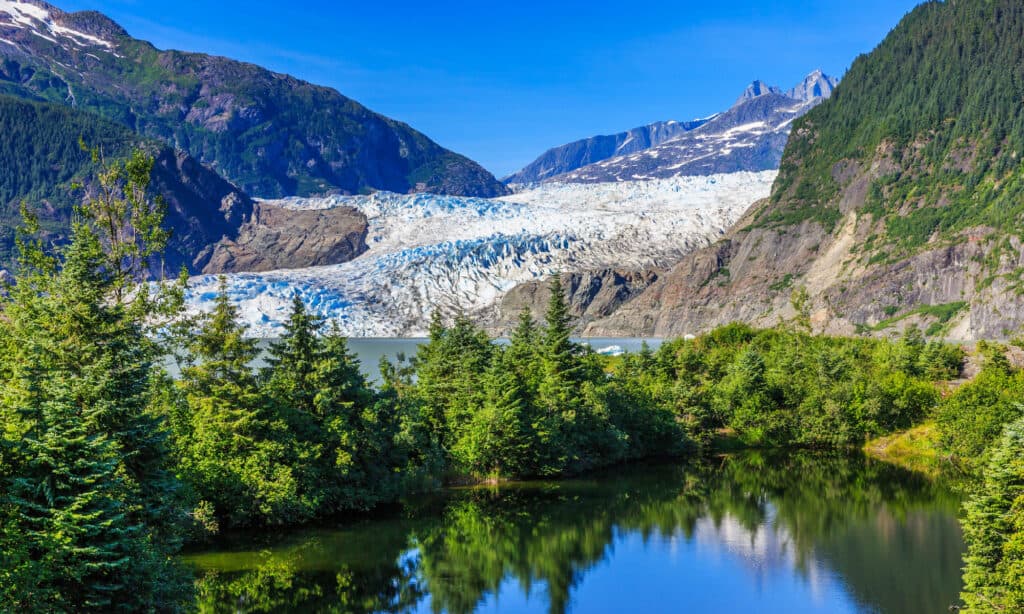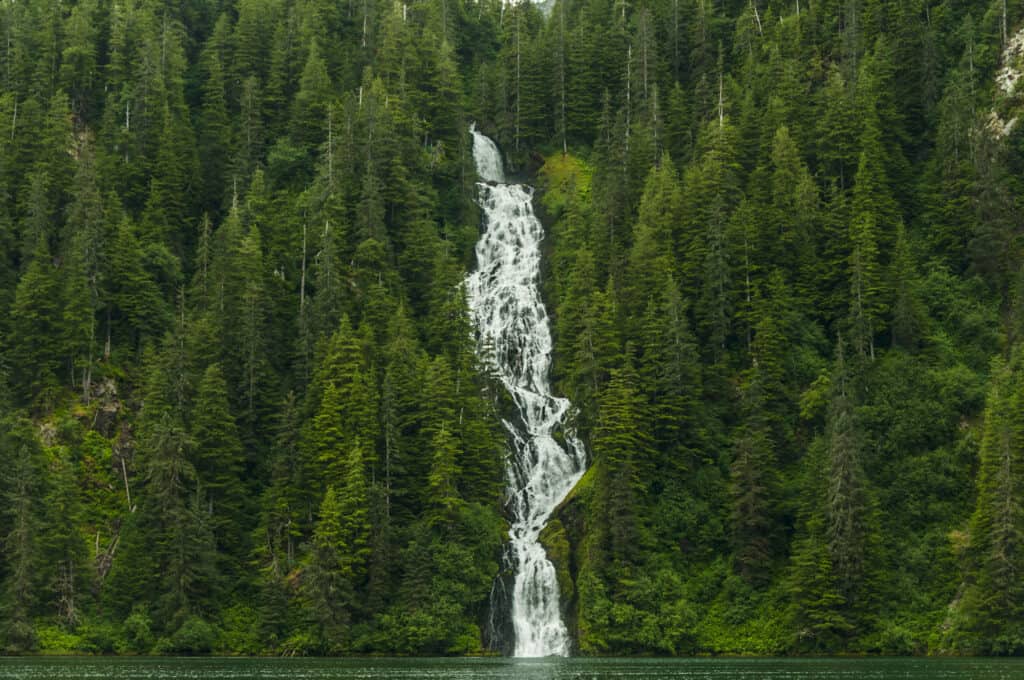There are countless forests in the United States. They come in different sizes across different habitats and climates, and each is beautiful in its own right. But the largest forest in the country is special for many reasons.
The Tongass National Forest, located in southeast Alaska, is the biggest forest in the United States at almost 17 million acres. It is home to many different species of plants and animals. Additionally, as a temperate rainforest, it soaks up large amounts of carbon which aids us and the planet in the fight against climate change.
How did this massive forest come to be? Are visitors allowed, and what kind of activities can they do? What wildlife species live here?
We’ll answer these questions as we tell you all about Tongass National Forest, the largest forest in the United States.
History of Tongass National Forest

As the largest forest in the United States, Tongass National Forest covers 500 miles of southeast Alaska across many islands. These islands are all part of the state’s southeastern archipelago. A good chunk of the trees found here is “old growth,” which means they’ve been growing for a long time. Some of these trees are at least 800 years old, marking them some of the oldest in the country.
Over the course of seven years, several presidents focused on protecting this area, ending with President Theodore Roosevelt designating 16.8 million acres as a national forest. This period of time was from 1902 to 1909 and it took three different presidential proclamations. Back in 1902, it was the Alexander Archipelago Forest Reserve. In 1909, when it expanded, it was named the Tongass National Forest.
The name Tongass comes from the Tongass clan, which was a part of the greater Tlingit tribe. The Tlingit people are indigenous to southern Alaska.
The Landscape of the Tongass National Forest

The landscape of the Tongass National Forest is undeniably beautiful and ranges from mountainous forests to streams and glaciers. The most famous glacier found in this national forest is the Mendenhall glacier. Hikers can reach this “drive-in” glacier from a paved road that is only about 13 miles from Juneau.
There are many different types of trees present in the Tongass National Forest, such as the red and yellow cedar tree, the hemlock, and the spruce. Growing beneath these massive trees are huckleberry and blueberry shrubs, which give way to moss on the rocks and trees.
Where Is Tongass National Forest Located on a Map?
Tongass National Forest covers more than 80% of the land in southeast Alaska, spans 11,000 miles of coastline, and includes 19 wilderness areas. Forest cities include Juneau, Sitka, Ketchikan, and Petersburg. Mendenhall Glacier within the forest is around 12 miles from Alaska’s capital city Juneau.
Wildlife in the Tongass National Forest

The Tongass National Forest is home to a great deal of wildlife across its many islands and acres.
Halibut Two types of bears inhabit the Tongass National Forest: the black bear and the brown bear. The latter hunts the Sitka blacktail deer alongside another predator, the wolf. Additionally, moose and mountain goats have made the forest their home. You can also find bald eagles, who perch in the massive trees. In fact, there are more bald eagles that live in this area than anywhere else on the planet!
What To Do in Tongass National Forest

In the area of the forest near Juneau, the capital of Alaska, there are about 20 different hikes. The U.S. Forest Service maintains these trails, working alongside indigenous tribal leaders and communities in the area. They can take visitors through mountains, dense forests, and even muskegs, types of swamps specific to North America. These swamps, or bogs, are a mixture of partially dead plants and water.
Kayaking and canoeing are popular activities at certain lakes and rivers throughout the Tongass National Forest. Additionally, bear viewing is popular throughout areas of the forest, especially when salmon are spawning in the late summer and early autumn. There are even whale watching tours available since the Pacific Ocean to the western edge of the forest is a temporary home to humpback whales as they migrate.
Conservation in Tongass National Forest

For as long as the Tongass National Forest has been around, even before it was officially made a national forest, conservationists and loggers have butted heads in the area.
In the late 19th century, there were less than a dozen logging mills located in the forest. But within the last century, logging in the Tongass National Forest has increased. In general, these loggers target the largest and oldest trees. Due to the rapid increase in logging, at least half of these large trees have been cut down.
Certain kinds of wildlife, like the native populations of fish, birds, and other animals, are still thriving but stand to lose their habitats due to logging. Because of this, and many other reasons, conservationists are keen on protecting the Tongass National Forest.
As a temperate rainforest, the Tongass region is able to soak up large amounts of carbon dioxide, which benefits the Earth as a whole.
What Kind of Animals Live in a Large Forest?
A large forest, such as the Tongass National Forest, can be home to a diverse range of animals, including:
- Mammals: deer, bear, wolf, elk, moose, beaver, marten, lynx, and wolverine
- Birds: Bald Eagles, ravens, owls, woodpeckers, various species of hawks, and many species of songbirds
- Fish: salmon, steelhead, and trout
- Reptiles and Amphibians: salamanders, newts, frogs, and snakes
- Invertebrates: spiders, millipedes, centipedes, beetles, ants, and butterflies.
It is worth noting that the specific types of animals present in a large forest can vary depending on the location, and the Tongass National Forest may have different animals than other forests, but the above-mentioned animals are common in a large forest.
The World’s Largest Petrified Tree Forest
So Tongass National Forest is the largest forest in the United States, but did you know that the U.S. is also home to the largest petrified tree forest on Earth?
It’s in Yellowstone National Park in an area called Specimen Ridge, located near Lamar Valley. Specimen Ridge is under 10 miles in length, but many have estimated the forest runs about 40 square miles across the Absaroka mountains.
The forest was created by volcanoes that were active more than 50 million years ago emitting ash, dirt and debris, which covered the surrounding vegetation. This petrified a whole forest, with volcanic substances acting as a preservative for trees including redwoods or sequoias, ash trees, oak trees, dogwoods, maples, pine trees, magnolias, and walnut trees. The petrified forest has been a source of scientific study for close to 150 years.




Which forest is small in United state
ReplyDelete